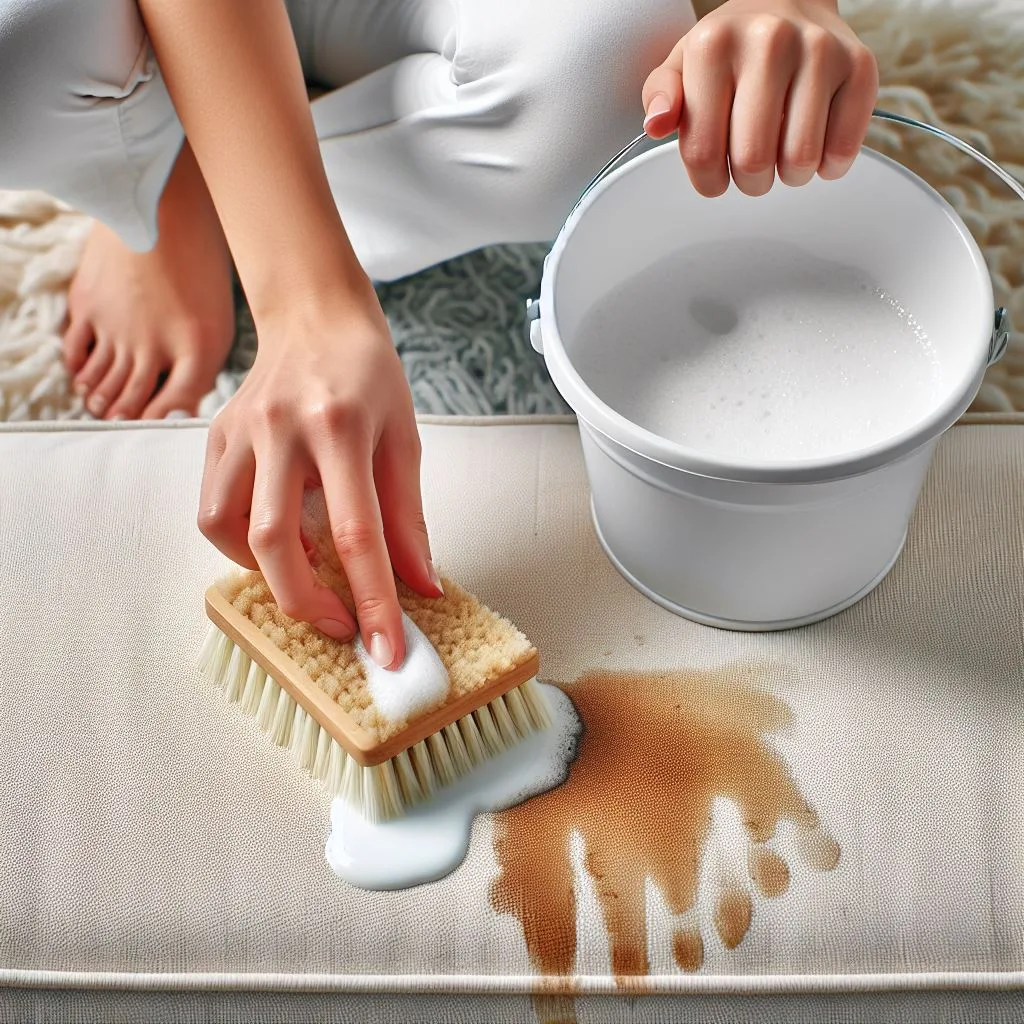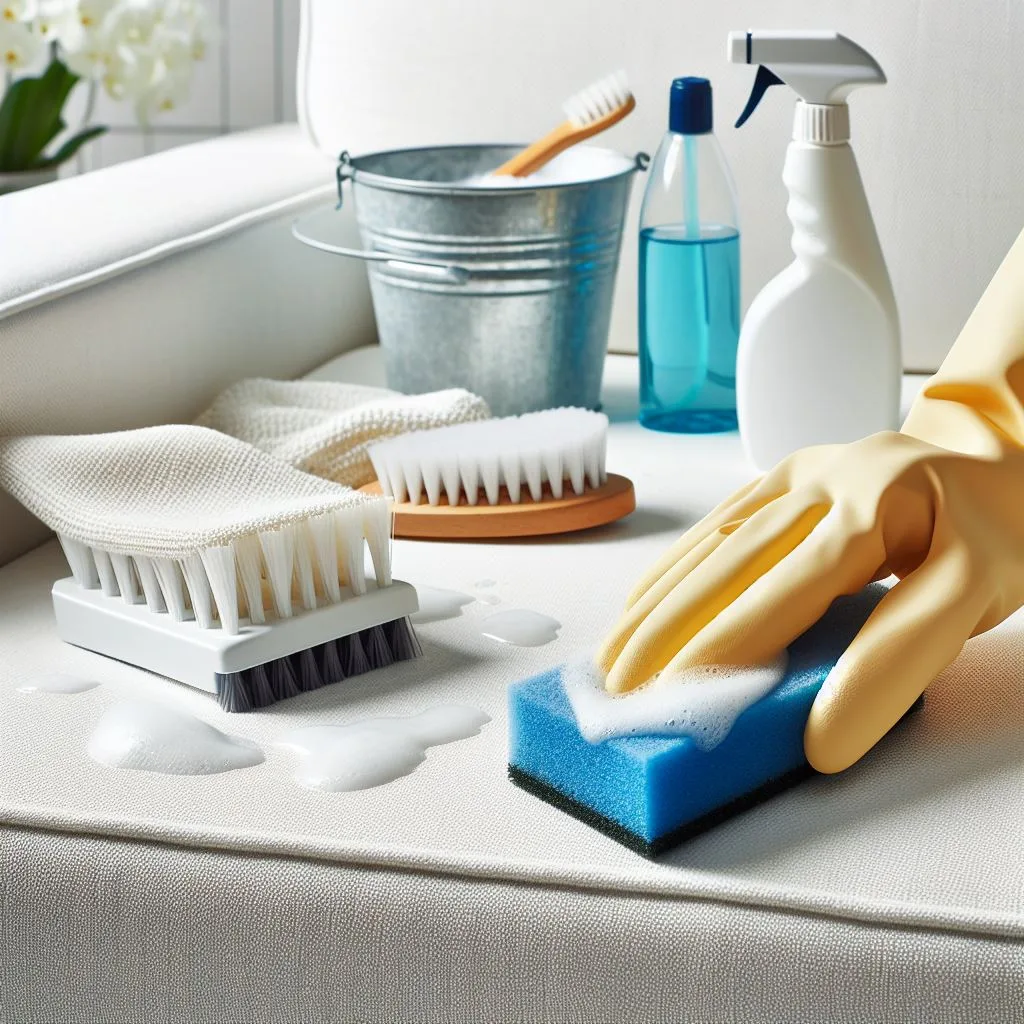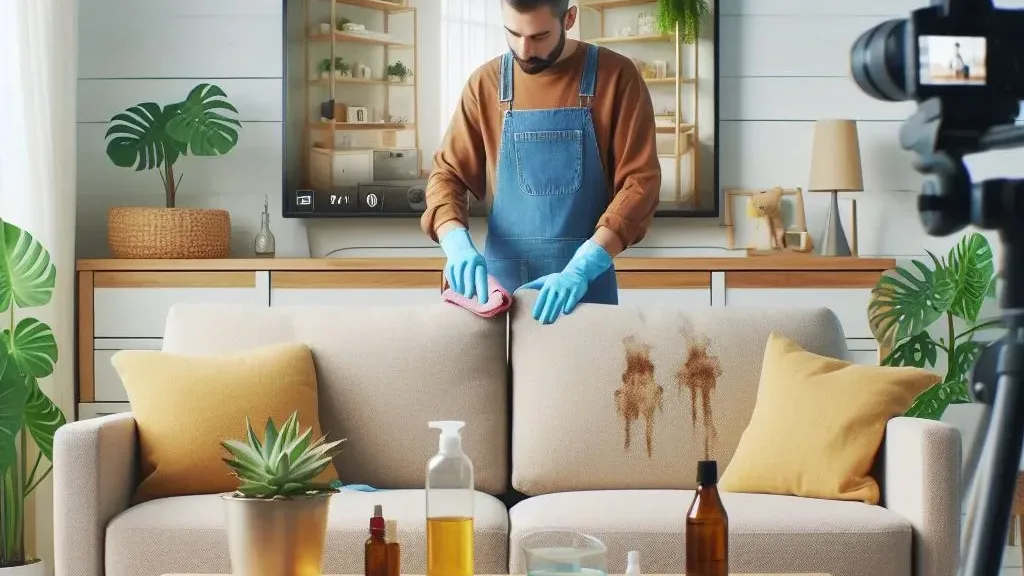A clean and spotless couch can significantly enhance the aesthetic appeal of your living room. However, maintaining its pristine condition requires knowing how to tackle various types of stains that may occur. Whether it’s a spill from a glass of wine, a pet accident, or a stubborn ink mark, this comprehensive guide “How to Get Stain Out of Couch” will equip you with the knowledge and techniques needed to keep your couch looking its best.
Importance of Keeping Your Couch Clean
Your couch is a focal point of your living space, and its cleanliness contributes to the overall ambiance of your home. Regular cleaning not only enhances its appearance but also extends its lifespan by preventing stains from setting in and damaging the fabric.
Common Types of Stains on Couches
Couches are prone to various types of stains, including food and beverage spills, pet accidents, ink marks, and more. Each type of stain requires a specific approach for effective removal, which we’ll cover in detail in this guide.
Overview of Methods Covered in the Guide
This guide “How to Get Stain Out of Couch” will walk you through general stain removal techniques, specific methods for different types of stains, upholstery fabric types and care, as well as aftercare and preventive measures to keep your couch looking fresh and clean.
Preparing How to Get Stain Out of Couch
Before diving into the stain removal process, it’s essential to prepare adequately. This involves gathering the necessary supplies, identifying the type of stain you’re dealing with, and conducting a small test to ensure the cleaning method won’t damage the fabric.

Gathering Necessary Supplies
To effectively remove stains from your couch, you’ll need:
- Clean, white cloths or paper towels
- Mild detergent or upholstery cleaner
- White vinegar
- Baking soda
- Hydrogen peroxide
- Clean sponge or soft-bristled brush
- Bucket of cold water
- Vacuum cleaner with upholstery attachment
Identifying the Type of Stain
Different stains require different treatment methods. Common types of stains on couches include:
- Food and beverage stains
- Pet stains
- Ink and marker stains
- Other common stains like blood and mud
Testing a Small Area
Before applying any cleaning solution to the stain, it’s crucial to test a small, inconspicuous area of the fabric to ensure that the cleaning product won’t cause any damage or discoloration.

General Stain Removal Techniques
When it comes to removing stains from your couch, there are some general techniques that apply to most types of stains.
Blotting vs. Rubbing: Best Practices
When dealing with a fresh stain, it’s crucial to blot the area gently with a clean cloth or paper towel. Avoid rubbing the stain, as this can push it deeper into the fabric and make it more challenging to remove.

Using Mild Detergent Solutions
For many stains, a mild detergent solution can be effective. Mix a small amount of mild liquid detergent with water and apply it to the stain using a clean cloth or sponge. Blot the stain gently, then rinse the area with clean water and blot dry.

Applying Homemade Stain Removers
Homemade stain removers can be effective for tackling specific types of stains. For example:
- For grease and oil stains, sprinkle baking soda on the affected area and let it sit for a few minutes before brushing it off.
- For ink stains, dab the area with a cloth soaked in rubbing alcohol or hydrogen peroxide.
- For pet urine stains, blot the area with a mixture of white vinegar and water.

Specific Stain Removal Methods
Different types of stains require different approaches for effective removal. Here are some specific methods for tackling common stains on couches.
1. Removing Food and Beverage Stains
Coffee and Tea Stains
Coffee and tea stains can be stubborn, but they can be removed by:
- Blotting the stain with a clean, dry cloth to remove excess liquid.
- Mixing a solution of water and mild detergent and applying it to the stain.
- Blotting the stain with the detergent solution until it is lifted.
- Rinsing the area with clean water and blotting dry.

Wine Stains
Wine stains should be treated as soon as possible with the following steps:
- Blotting the stain with a clean cloth to absorb as much liquid as possible.
- Sprinkling salt on the stain to absorb more of the wine.
- Applying a mixture of water and mild detergent to the stain and blotting until the stain is lifted.
- Rinsing the area with clean water and blotting dry.
Grease and Oil Stains
Grease and oil stains can be challenging, but they can be removed by:
- Sprinkling baking soda on the stain and letting it sit for a few minutes.
- Brushing off the baking soda and blotting the stain with a cloth soaked in a mild detergent solution.
- Rinsing the area with clean water and blotting dry.
2. Tackling Pet Stains
Urine Stains
Pet urine stains should be addressed promptly with the following steps:
- Blotting the urine with a clean cloth to absorb as much liquid as possible.
- Applying a mixture of white vinegar and water to the stain and blotting until the odor is neutralized.
- Sprinkling baking soda on the stain and letting it sit for a few hours before vacuuming it up.

Vomit Stains
Vomit stains can be unpleasant but can be removed by:
- Removing any solid debris with a spoon or spatula.
- Blotting the stain with a clean cloth to absorb excess liquid.
- Applying a mixture of water and mild detergent to the stain and blotting until it is lifted.
- Rinsing the area with clean water and blotting dry.
Fur and Dander
To remove fur and dander from your couch, regular vacuuming with an upholstery attachment is the best method.
3. Dealing with Ink and Marker Stains
Ink and marker stains can be challenging, but they can be removed by:
- Blotting the stain with a cloth soaked in rubbing alcohol or hydrogen peroxide.
- Repeating the process until the stain is lifted.
- Rinsing the area with clean water and blotting dry.

4. Addressing Other Common Stains
Blood Stains
Blood stains should be addressed promptly by:
- Blotting the stain with a cloth soaked in cold water.
- Applying a mixture of water and mild detergent to the stain and blotting until it is lifted.
- Rinsing the area with clean water and blotting dry.

Mud and Dirt Stains
Mud and dirt stains can be removed by:
- Allowing the mud to dry completely.
- Brushing off as much of the dried mud as possible.
- Blotting the stain with a cloth soaked in a mild detergent solution.
- Rinsing the area with clean water and blotting dry.
Upholstery Fabric Types and Care
Understanding the type of fabric your couch is made of is essential for proper maintenance and stain removal.
Understanding Different Types of Fabrics
Common upholstery fabrics include:
- Cotton: Durable and easy to clean but prone to wrinkling and fading.
- Linen: Natural and breathable but susceptible to wrinkles and stains.
- Leather: Luxurious and durable but requires special care to prevent drying and cracking.
- Microfiber: Stain-resistant and easy to clean but may attract dust and pet hair.
Tips for Maintaining Upholstery
To keep your upholstery in top condition, consider the following tips:
- Vacuum your couch regularly to remove dust and debris.
- Use a fabric protector to guard against stains and spills.
- Rotate and flip cushions regularly to prevent uneven wear.
- Keep your couch away from direct sunlight to prevent fading.
Recommended Cleaning Methods for Each Fabric Type
Different fabric types require different cleaning methods:
- Cotton: Can be cleaned with a mild detergent solution or upholstery cleaner.
- Linen: Spot clean with a mild detergent solution and avoid excessive moisture.
- Leather: Use a leather cleaner and conditioner to maintain its appearance and texture.
- Microfiber: Clean with a mild soap and water solution or a specialized microfiber cleaner.
Aftercare and Preventive Measures
Once you’ve successfully removed the stains from your couch, it’s essential to take steps to prevent future stains and maintain its cleanliness.
Drying and Vacuuming
After cleaning, allow your couch to dry completely before using it again. Once dry, vacuum the upholstery to remove any remaining dirt or debris.
Using Fabric Protectors
Applying a fabric protector can help prevent future stains by creating a barrier between the fabric and spills. Follow the manufacturer’s instructions for best results.
Regular Maintenance Tips for a Clean Couch
To keep your couch looking its best, consider the following maintenance tips:
- Vacuum your couch regularly to remove dust and debris.
- Rotate and flip cushions to ensure even wear.
- Address spills and stains promptly to prevent them from setting in.
Conclusion
Maintaining a clean and stain-free couch is essential for a welcoming and comfortable living space. By following the methods and tips outlined in this guide, how to get stain out of couch you can effectively and keep it looking fresh and inviting for years to come.
Remember to always test any cleaning solution on a small, inconspicuous area of your couch before applying it to the stain. Additionally, if you’re dealing with a particularly stubborn or large stain, consider seeking professional upholstery cleaning services for the best results.
By taking care of your couch and addressing stains promptly, you can ensure that it remains a beautiful and functional centerpiece of your home for years to come.
FAQ
How do you get stains out of a fabric couch?
To remove stains from a fabric couch, start by blotting the stain with a clean cloth to absorb excess liquid. Then, apply a mild detergent solution to the stain and blot gently until it lifts. Finally, rinse the area with clean water and blot dry.
What is the best way to remove stain from furniture?
The best way to remove stains from furniture depends on the type of stain and the material of the furniture. For general stains, blotting with a clean cloth and using a mild detergent solution often works well. For specific stains like ink or wine, specialized cleaners may be necessary.
Does baking soda remove couch stains?
Yes, baking soda can be effective in removing certain types of couch stains, especially those caused by grease or oil. Sprinkle baking soda on the stained area, let it sit for a few minutes to absorb the stain, then brush or vacuum it away.
What is the best cleaning solution for couch stains?
A mild detergent solution is often the best cleaning solution for most couch stains. Mix a small amount of mild liquid detergent with water and apply it to the stain, then blot gently until the stain is lifted. Always test any cleaning solution on a small, inconspicuous area of the couch first to ensure compatibility with the fabric.
Additional Resources:
Related Article:

